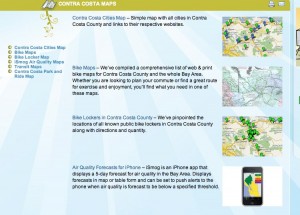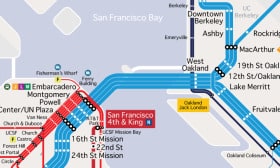A map of Los Angeles’ current rail network. Image credit: Kriston Lewis
Los Angeles is being hailed for its steady revival of the thriving rail system it once had, but the current plan to create a convenient network that connects the whole county is still 30 years away. The Los Angeles rail system has seen rapid growth in usage with the most recent addition, the Expo Line, which was completed earlier this year.
Now, let’s imagine what the freeway system in L.A. would like like if it was a rail system? We have an idea thanks to “Stonebrown Design,” who has put together maps of L.A.’s freeway system as though it were a rail system:
Los Angeles’ freeway system, seen in rail map form. Screen-grab via: Stonebrown Design
Comparing the above Stonebrown Design map to the current Metro Rail map there is a clear visualization demonstrating that rail doesn’t serve as many people as the freeways do (yet!).
To see more detailed maps of L.A.’s freeways with a “public transit vision,” head over Stonebrown Design’s Greater Los Angeles Freeway System Map page (soon you’ll be able to purchase prints as well, due to a rather successful Kickstarter campaign).

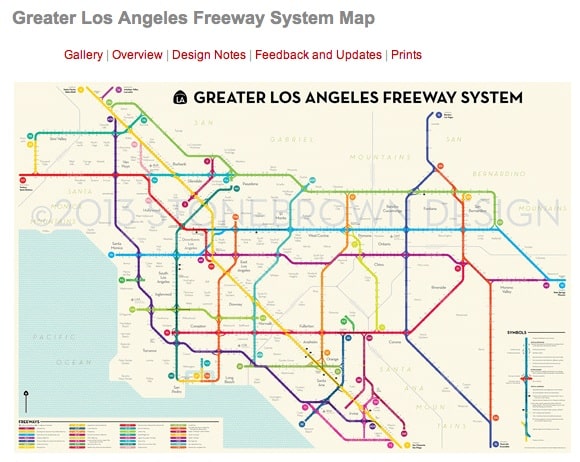

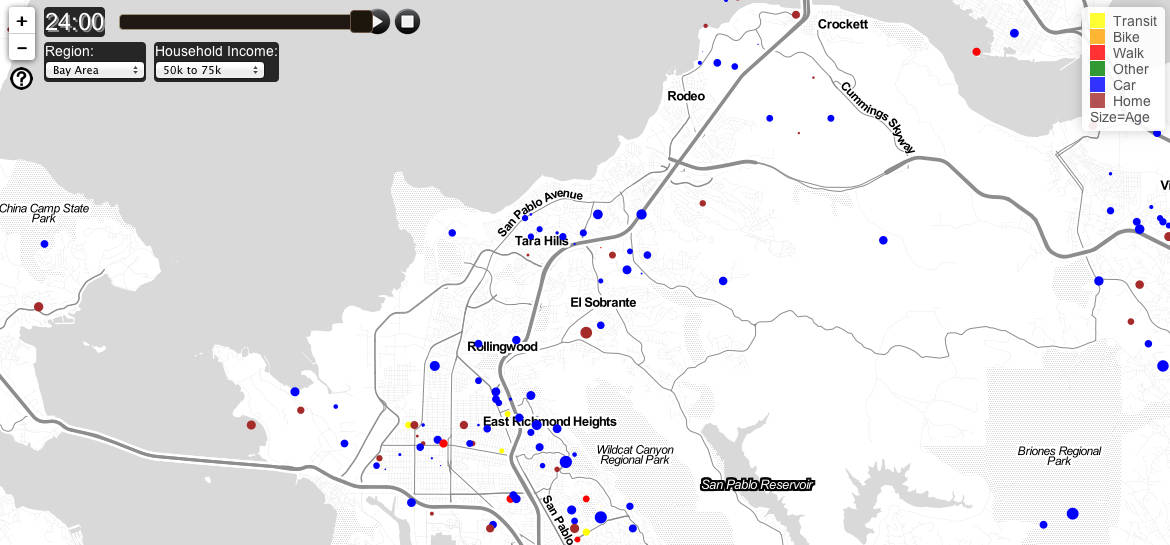
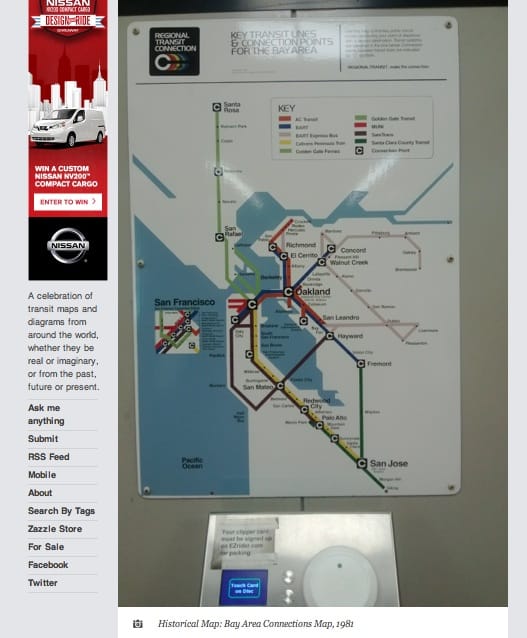
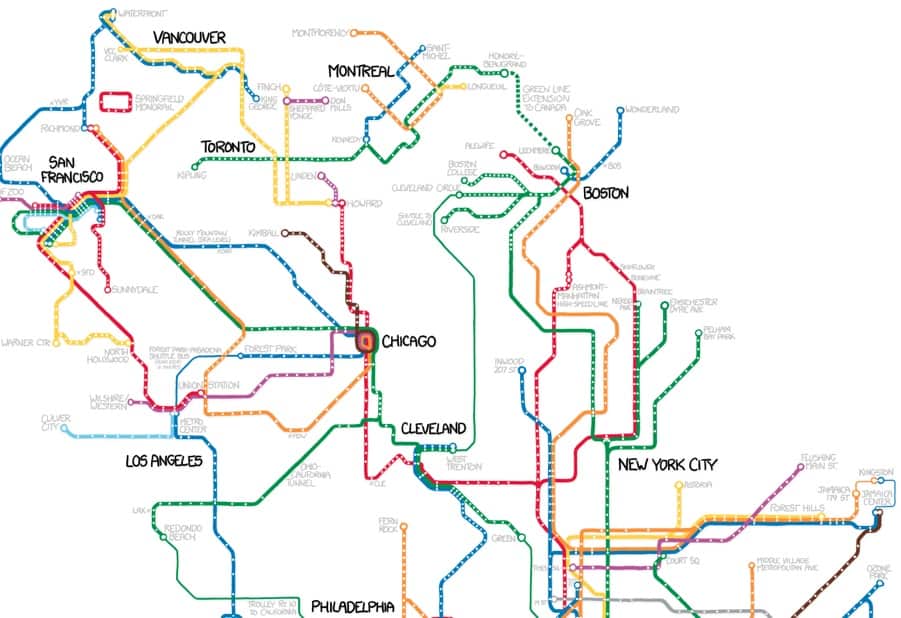
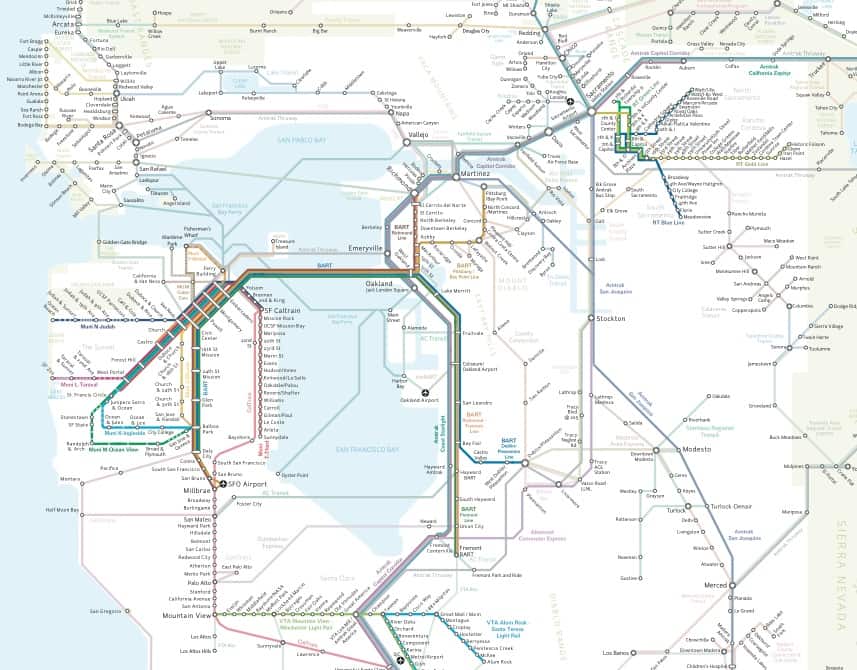
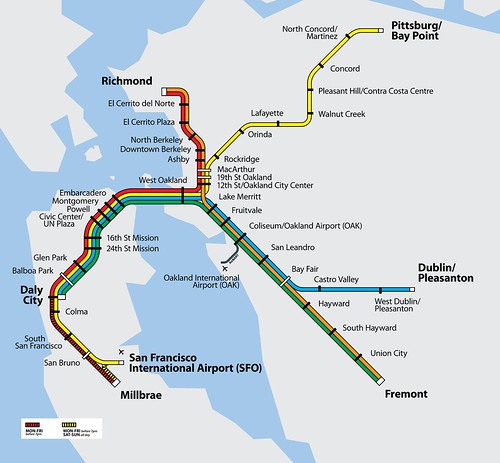

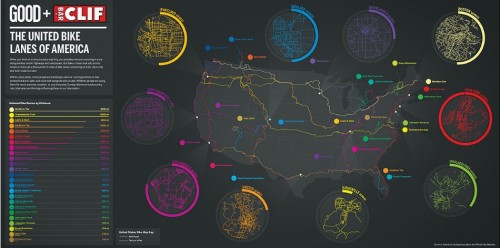
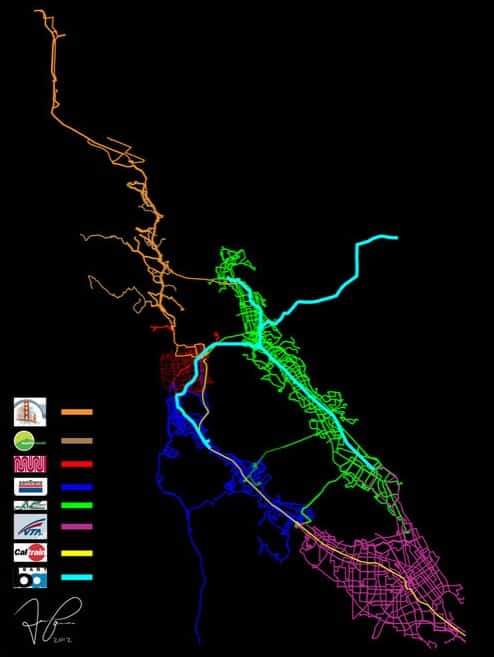
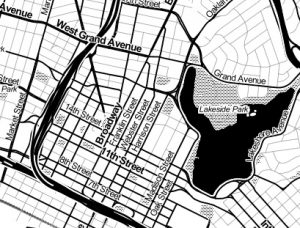
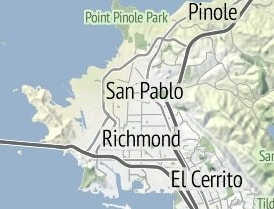
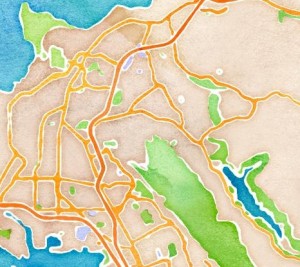

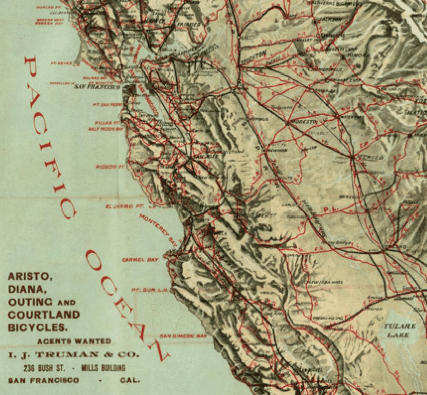
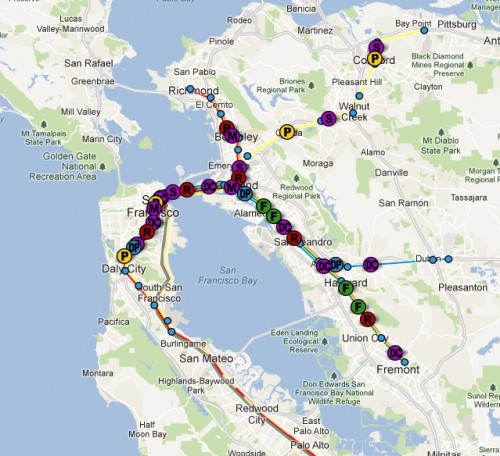
 While practically half of San Francisco lies within the 30-minute time zone, none of the trans-bay commuters now reach land within that time. All of the trans-bay districts are reached within an hour, the same as San Francisco. But for the former, from one-fourth to one-half of the time is consumed in the water trip. Shaded contour areas and time points within circles indicate how far commuters may ride within 10-minute intervals from the center of the business district-Third and Market Streets (allowing seven minutes to the Ferry terminal, and 10 minutes to the railroad terminal at Third and Townsend Streets). The inner shaded zones correspond to the running time by electric and cable lines. Double circles and the Peninsular zone particularly refer to steam lines. Running speed is indicated directly by the relative distance between these time points. For steam trains, the time shown is on limited local trains passing by only the less important stations. Some limited expresses make 26% better time, and way locals 15% slower time than here indicated. With the same character of rapid transit equipment, it appears that from 20 to 30 minutes more running time will always be necessary, by reason of the water trip, for trans-bay commuters to reach their homes than for San Franciscans, but that no such handicap exists as a limitation for Peninsular development.
While practically half of San Francisco lies within the 30-minute time zone, none of the trans-bay commuters now reach land within that time. All of the trans-bay districts are reached within an hour, the same as San Francisco. But for the former, from one-fourth to one-half of the time is consumed in the water trip. Shaded contour areas and time points within circles indicate how far commuters may ride within 10-minute intervals from the center of the business district-Third and Market Streets (allowing seven minutes to the Ferry terminal, and 10 minutes to the railroad terminal at Third and Townsend Streets). The inner shaded zones correspond to the running time by electric and cable lines. Double circles and the Peninsular zone particularly refer to steam lines. Running speed is indicated directly by the relative distance between these time points. For steam trains, the time shown is on limited local trains passing by only the less important stations. Some limited expresses make 26% better time, and way locals 15% slower time than here indicated. With the same character of rapid transit equipment, it appears that from 20 to 30 minutes more running time will always be necessary, by reason of the water trip, for trans-bay commuters to reach their homes than for San Franciscans, but that no such handicap exists as a limitation for Peninsular development.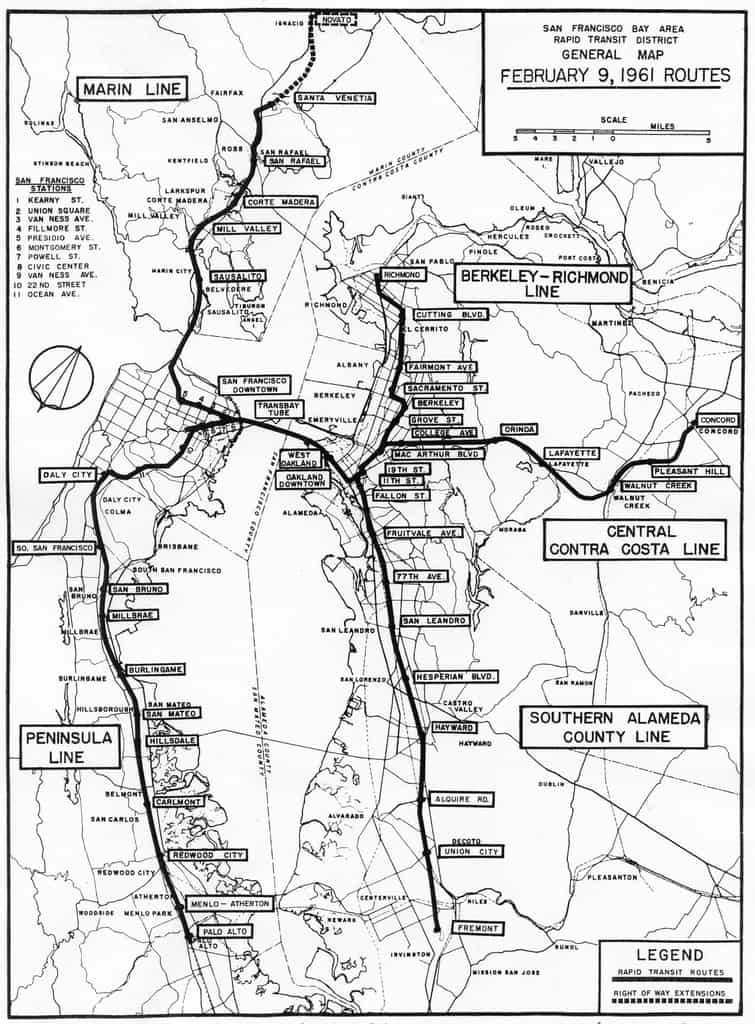
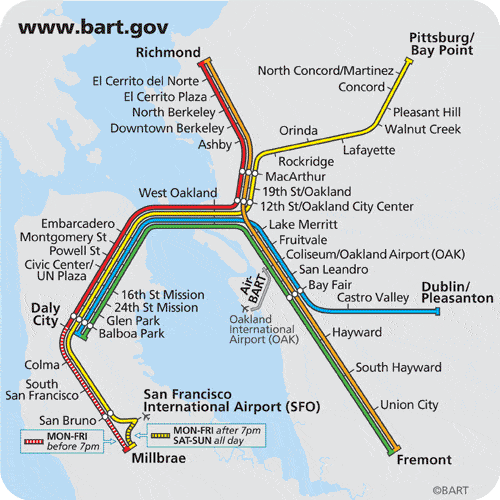
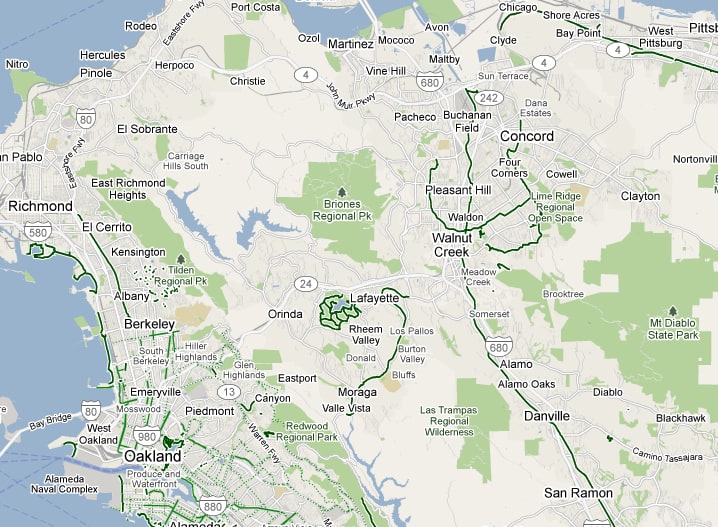
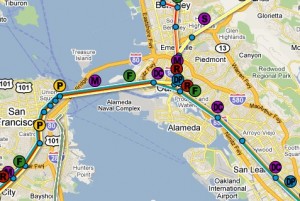
 A
A 